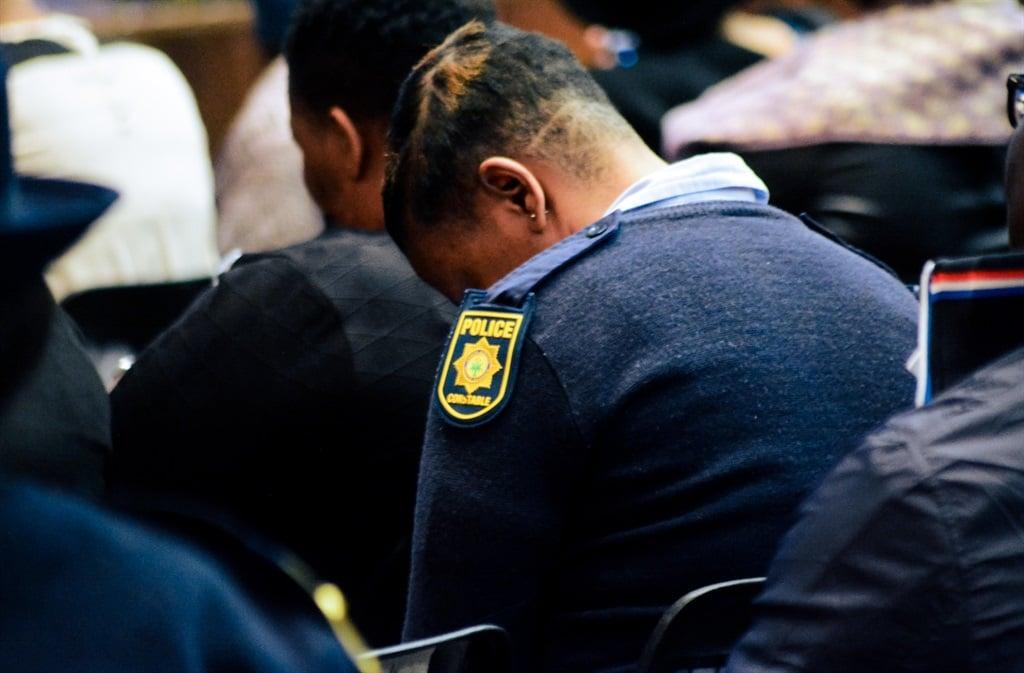Africa-Press – South-Africa. A decline in disciplinary actions does not mean that the police are more disciplined than before, writes Lukas Muntingh. He details why.
The most recent SAPS annual report reflects a further decline in disciplinary actions instituted against SAPS officials. From a high of 6 053 in 2013/14 it has now dropped to 1 362 in 2021/22.
This does not mean that the police are more disciplined since the annual intake of cases against the police by the Independent Police Investigating Directorate (IPID) is on average of 5 942 per year (max 7 014 and min 5 295).
It should be noted that IPID is restricted to taking only cases alleging serious criminal conduct by the police. These cover: deaths in police custody; deaths as a result of police actions; discharge of an official firearm; rape by a police officer; rape of any person in police custody; torture or assault against a police officer; corruption and any other matter referred to it as a result of a decision by the Executive Director, the Minister, a MEC or the Secretary. IPID also investigates cases against metro-police services, but these constitute less than 2% of the total.
Of the 5234 SAPS cases referred to IPID, 65% (3383) were for assault and another 4% (190) for torture.
Chances are that many of the assault cases may meet the threshold for torture.
Of particular concern are the 401 cases for deaths due to police action, and furthermore, 98 cases for ‘rape by a police officer’. Based on IPID data, it can be concluded that the police are implicated in 14 serious crimes every day of the year; a not insignificant contribution from the government department mandated by the Constitution “to prevent, combat and investigate crime, to maintain public order, to protect and secure the inhabitants of the Republic and their property, and to uphold and enforce the law.”
Unreported crimes
To this may be added crimes perpetrated by the police that are not reported as well as crimes that are reported to other agencies, such as the Human Rights Commission or to SAPS itself.
Below, it will be argued that an effective and efficient disciplinary system stands central to the effectiveness of the police and its ability to make a positive impact on crime. At present, this is manifestly lacking, as evidenced, at least, by the volume of cases referred to IPID annually compared to the dwindling number of disciplinary actions. The precipitous decline in disciplinary action against police officials (see Fig. 1) coincides with Minister Fikile Mbalula at the helm (preceded by Mthethwa and Nhleko) who was succeeded by Beki Cele in 2017.
In this transition, there were two acting National Commissioners (Phahlane and Mothiba 2015-2017), and then Khehla Sithole was appointed as National Commissioner in November 2017 until March 2022. From 2012 to 2015, Riah Phiyega was the National Commissioner, and during this period the number of disciplinary actions had already declined.
In short, over a period of some nine years, there were four Ministers of Police and five National Commissioners; three permanently appointed and two Acting National Commissioners. With this instability in leadership as context, the decline in disciplinary code enforcement happened on such a scale, especially from 2016/17 to 2017/18, that it points to a deliberate decision as opposed to the organic erosion of command and control. There was indeed such a decision.
On 1 November 2016, the Minister of Police, Nathi Nhleko at the time, issued new disciplinary regulations for SAPS and Fig. 1 shows that this was a turning point.
In a 2017 article, Andrew Faull drew attention to two, among other, important changes in the disciplinary regulations. The first was that it created ambiguity in how guilt is determined for a disciplinary offence by requiring that the alleged actions should be assessed against:
“(a) the actual or potential impact of the alleged misconduct on the work or the image of the Service, station, unit or component of the employee, and his or her colleagues;
(b) the nature of the work and responsibilities of the employee; and
(c) the circumstances in which the alleged misconduct took place”.
While this is seemingly rational, it opened the door wide for discretionary and subjective interpretations of and decisions on what constituted a disciplinary offence. The second important but seemingly innocuous change from the 2006 to the 2016 Disciplinary Regulations was that the latter required the conviction of a police member of a common law or statutory offence to meet the threshold of misconduct compared to committing such an offence under the 2006 regulations.
A disciplinary hearing could have made such a finding under the 2006 code on a balance of probabilities, a much lower bar and thus easier than a criminal conviction set in the 2016 regulations, which must be beyond a reasonable doubt.
A second concerning fact from the most recent annual report is that firearms lost by SAPS has increased by 29% from 565 in 2020/1 to 712 in 2021/22; or nearly two firearms being lost per day by SAPS. These would include firearms issued to police officers as their official firearms to be carried on their person, as well as firearms lost from evidence stores and firearm safes.
SAPS explain the increase as follows in the most recent annual report: “The increase can be attributed to an escalation of crime against members, including, but not limited to robbery in townships, housebreaking, theft from dwellings, as well as negligence by members.”
More data is not presented on the proportion of firearms lost due to negligence compared to other reasons, but it can nonetheless be surmised that if there was strict adherence to firearm security protocols (and accompanying disciplinary measures) as well as the secure storage of evidence, that losses due to actions by criminals would be less. One is tempted to speculate that the lack of disclosure is deliberate to somehow shift blame and focus away from SAPS members. Allegations are also rife that apart from negligence, some police officials sell their firearms or rent it out to criminals.
Third, data from IPID annual reports sketch an equally dismal picture as far as accountability is concerned. In 2021/22 IPID referred 2 427 cases to the NPA to be considered for prosecution, and of these, 48 or 2% were indeed prosecuted; 14 were withdrawn; in 946 (40%) cases, the NPA declined to prosecute, and in 1401 (58%) cases, IPID is awaiting feedback from the NPA. Prosecutions of police officials for serious crimes and rights violations simply does not happen on any significant scale, perpetuating a culture of de facto impunity, thus feeding into the poor record of disciplinary code enforcement.
Fourth, IPID also referred cases to SAPS for disciplinary handling, and there were 756 such cases in 2021/22. A quarter of these were not finalised at the time of reporting, but of those which have been finalised, there were 190 guilty findings (40%); in 32%, ‘no steps taken’ and 21% acquitted. The volume of cases handled thus, as well as the fact that these were dealt with internally by SAPS as, overshadow the already modest achievement.
The above data creates the impression that instead of enforcing the disciplinary code, it appears that every possible measure is being used not to do so, and when it is unavoidable, the least serious sanction is imposed. The failures in exercising effective disciplinary enforcement should be seen against a steep and steady increase in the murder rate since 2012.
The murder rate is important because it is the most reliable indicator of crime in general and, in particular, of violent crime. In 2012 there were 15 554 murders reported, and by 2020 this had climbed to 21 325, or an increase of some 37%. In 2020/1 it declined somewhat (most likely due to Covid-19 restrictions), but all indications are that it will reach 24 000 in 2022/3; there had already been 12 500 murders reported in the first half of 2022. In short, it then appears that the failures by SAPS management in running an effective, efficient and accountable police service, as reflected in declining disciplinary matters, is ultimately visible in the rapid increase in the murder rate from 2012 onwards.
There is an association in the data between the number of disciplinary actions against police officials and the murder rate. Simply put, data for the period 2012 to 2022 show that nearly 80% of the murder rate can be predicted by the number of disciplinary actions against police officials (R2 = 0.7799). In short, this means that more disciplinary action predicts fewer murders. A possible interpretation of this predictive relationship is that disciplinary action is a strong indicator of how well the police service is functioning.
Oblivious or indifferent
Disciplinary action is indicative of and is preceded by a range of measures taken by management (e.g., training, proper supervision, rule setting and ultimately disciplinary action) and also the police officials at operational level. More disciplinary action means that managers are enforcing standards of performance, and this leads to better general performance and better policing in general, which results in fewer murders. It is more than likely that it will similarly have a positive impact on the number of serious and violent crimes. It also means that management should also be reacting to minor infractions and not only to serious transgressions.
Better policing requires, at an absolute minimum, effective command and control: Command and control is the authority and capability of an organisation to direct the actions of its personnel and the use of its equipment. A better functioning police service may well affect murder rates, leading to the observed relationship between disciplinary action and murder rates. There is little sense in introducing reforms in the police or have any expectations of improved performance if there is no effective command and control in place – it is a fundamental precondition for constructive change. It is critical that at the smallest operational level unit that officials are effectively managed and that they are held accountable if there are operational and/or ethical failures.
It is the case that police officials, especially in the context of interacting with the public, are afforded wide discretion, and there is indeed much reliance on their personal judgment and integrity to make the right decision – this means decisions that are compatible with SAPS’s mandate and the Bill of Rights. Failures in this regard must therefore be seen in an extremely serious light because they are entrusted by the Constitution to respect, protect, promote and fulfil the rights in the Bill of Rights. The current state of affairs, as was shown above, did not develop overnight, but police management was seemingly oblivious to this or stood deliberately indifferent to the risks and ultimately results. Seen against the number of serious crimes implicating the police and the number of firearms lost, it is then simply inexplicable that the disciplinary code is not enforced, and prosecutions remain a rarity.
– Lukas Muntingh is an Associate Professor and ACJR Project Coordinator.
For More News And Analysis About South-Africa Follow Africa-Press






